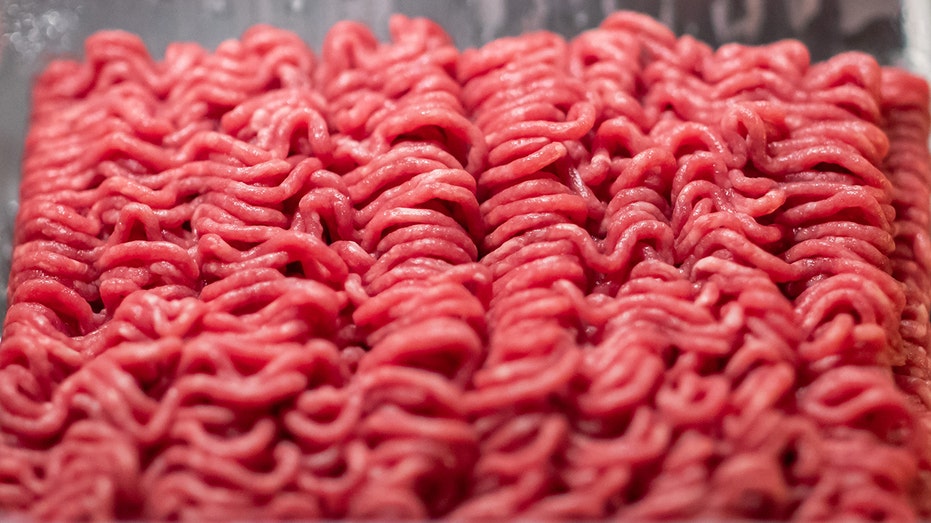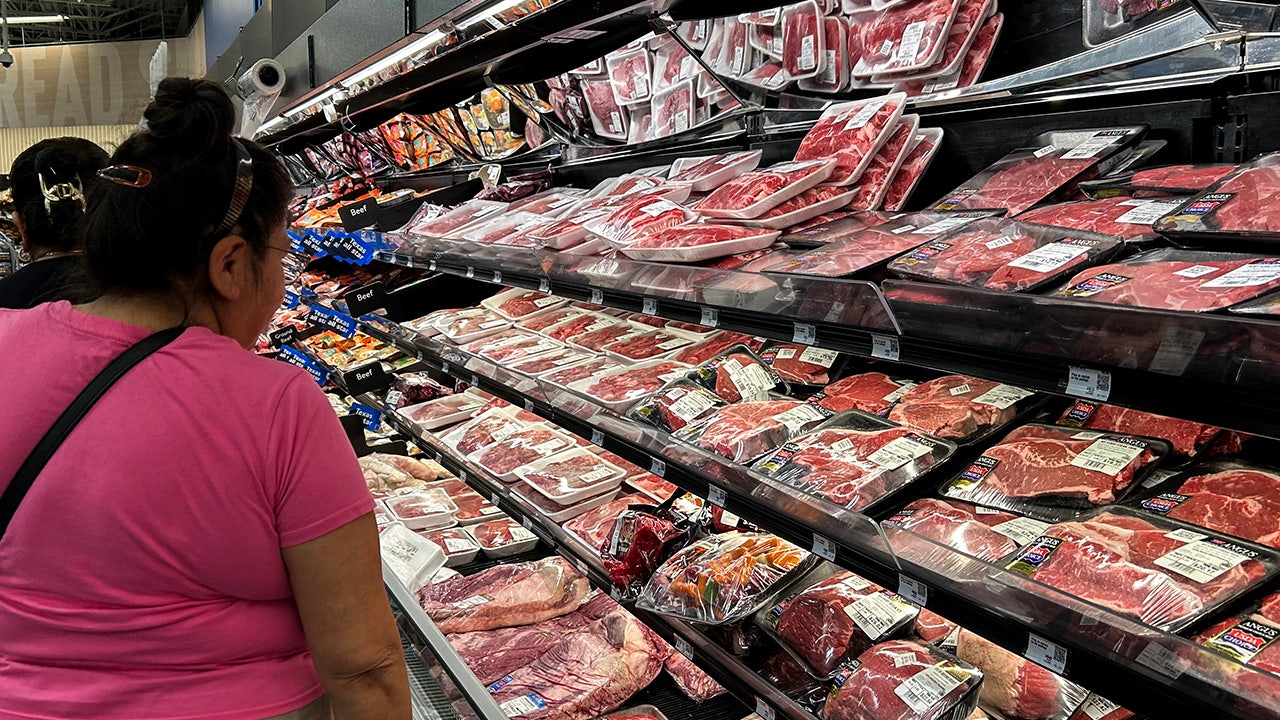Beef prices are at a record high in the wake of a drought that left cattle inventory at the lowest level in 70 years amid strong demand, resulting in price increases for steak and ground beef.
The Bureau of Labor Statistics’ consumer price index report for August showed a surge in beef prices over the past year. Ground beef prices were up 12.8% on a year-over-year basis in August, while beef roasts were up 13.6% and steak prices were 16.6% higher. Those inflation figures are well above the 3.2% year-over-year rise in all food categories, as well as the 5.4% rise in meat prices from last year.
Cattle rancher Mike Martz of Larson Farms in Maple Park, Illinois, told FOX Business’ Kelly Saberi that cattle inventories have declined in recent years due to drought affecting important ranching areas.
“The real issue here is the drought that happened a number of years ago and Texas, Oklahoma, Kansas, the Southeast lost all their grass, all their forage, and when that happens you’ve got to liquidate cows, and that’s what we’ve done,” Martz said. “We’ve got the lowest cow inventory since 1951, so that’s the cause of this.”
THAT LATTE OR CAPPUCCINO COULD GET MORE EXPENSIVE AS COFFEE PRICES CONTINUE TO RISE
Overhead costs for cattle ranchers have also climbed, with feed, labor, fuel and equipment expenses trending higher.
Imports have been constrained by illnesses affecting cattle, with shipments of live cattle from Mexico suspended by the U.S. Department of Agriculture in May because of cases of New World screwworm – a flesh-eating parasite – affecting cattle closer to the U.S. border.
Higher tariffs have also factored into higher beef prices hitting consumers at the checkout line, with beef from Brazil facing a 76% tariff and other beef-producing countries facing tariffs as well.
FED PRESIDENT WARNS INFLATION IS ‘GOING THE WRONG WAY’ AS TARIFF CONCERNS MOUNT

Martz said it’s important that the Trump administration help farmers and ranchers affected by tariffs, because some operations like his rely on both crops and livestock to stay afloat.
“It’s important because some of the price drop we’ve seen on the grain side came from the tariffs, and we’re seeing input costs higher because it came from the tariffs,” Martz said.
“Here at Larson Farms, we’ve got our cattle operation, we’ve got our crop operation – the cattle are making money, the crops are going to lose money, so hopefully we can average that together, but we need some support.”
BACK-TO-BACK HIGHS: AUGUST AND SEPTEMBER BRING IN $62.6B IN TARIFF REVENUE
A trade group representing cattle ranchers said that the higher beef prices have helped make up for economic challenges faced in recent years under the Biden administration.
“Between inflation, rising costs, and government red tape during the Biden administration, cattle farmers and ranchers have been stretched thin,” said National Cattlemen’s Beef Association CEO Colin Woodall. “The better prices farmers and ranchers are now receiving for their cattle is a welcomed change. Farming and ranching families now have more resources to make ends meet and keep their cattle operations going for the future.”
“These prices, coupled with the tax relief delivered by President Trump’s One Big Beautiful Bill, are essential for the success of America’s cattle industry. Family farmers and ranchers now have even more tools to help them invest in their operations, purchase new equipment, and continue meeting the strong demand for high-quality American beef,” Woodall added.
